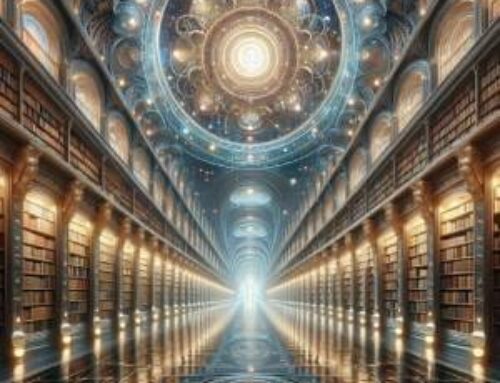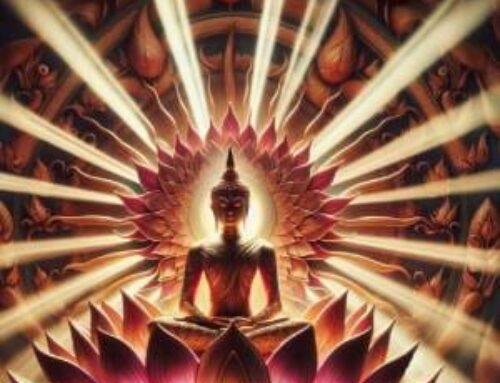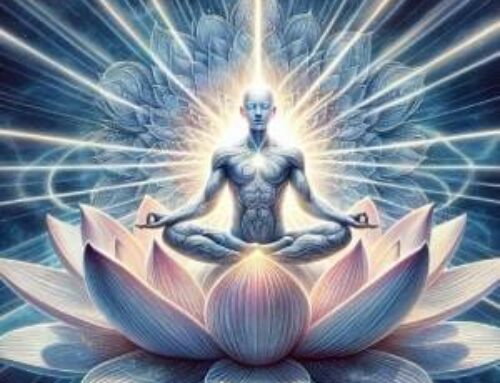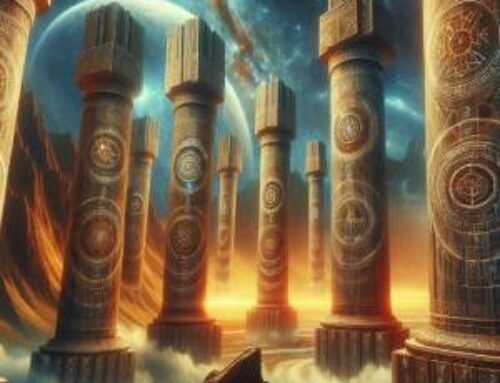Contents
Introduction to “The Enlightenment Era”
Understanding the Enlightenment era necessitates more than a cursory glance—it was a time brimming with intellectual fervor, a cauldron where reason, science, and the arts boiled over with new ideas. The Enlightenment era, spanning from the late 17th to the 19th centuries, was fundamentally about the pursuit of knowledge and the celebration of human reason. Philosophers, scientists, and artists engaged in passionate discourse, transforming the way societies thought and functioned.
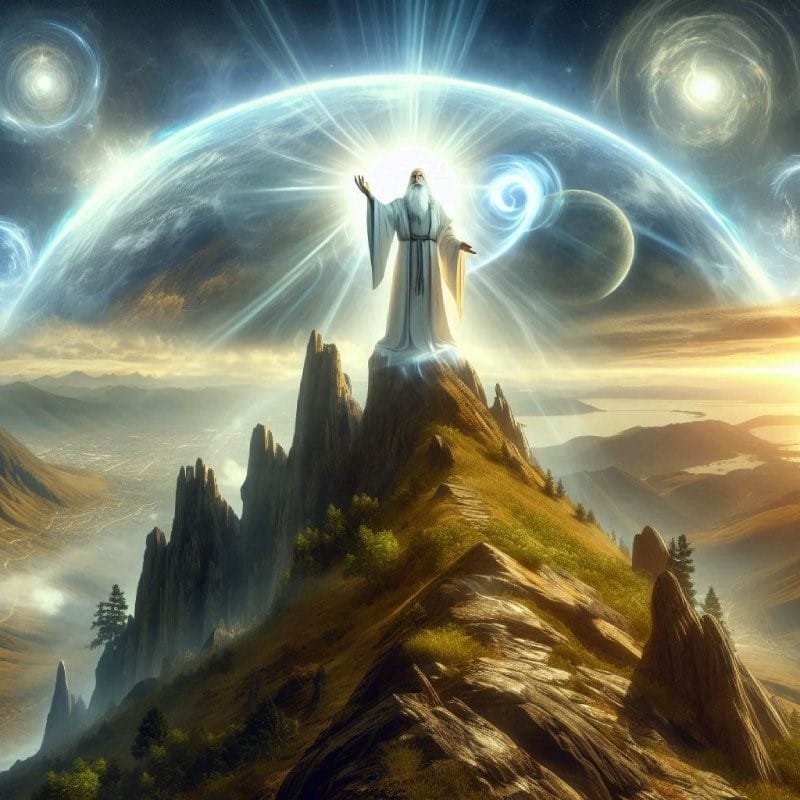
A Symphony of Reason and Revelation
Yet, amidst the rationalist fervor, there lurked the shadowy allure of Hermeticism (1). A mystical tradition with roots digging deep into the ancient sands of time, attributed to the mythical Hermes Trismegistus, Hermeticism offered an esoteric counterpoint to the empirical focus of the age. It was an era of strange bedfellows where science and mysticism intertwined in a complex dance.
Newton’s Alchemical Curiosities
Take Isaac Newton, for instance—a paragon of scientific rationalism, whose laws of motion and gravity laid the bedrock for modern physics (2). And yet, Newton was a devoted alchemist, engrossed in the quest for the Philosopher’s Stone. His journals, filled with cryptic notes and alchemical recipes, reveal a man as much an explorer of the mystical as of the mathematical.
Leibniz and the Mystical Monadology
Then there’s Gottfried Wilhelm Leibniz, a polymath whose contributions spanned mathematics, philosophy, and logic. Known for developing calculus independently of Newton, Leibniz was equally invested in the metaphysical, proposing a universe composed of simple substances he called “monads.” These monads, he argued, were imbued with a divine spark—an idea steeped in Hermetic thought.
Intertwining Threads of Thought
The Enlightenment was not a monolithic march towards reason but rather a complex tapestry woven from diverse threads of thought. The interplay between Hermeticism and empirical science reveals the era’s rich intellectual texture. This blend of the mystical and the rational reflects a broader human impulse—to seek understanding in both the observable and the unseen realms.
An Age of Paradox
In essence, the Enlightenment era stands as a testament to the duality of human pursuit—where reason and mysticism coexisted, each influencing and shaping the other. Figures like Newton and Leibniz embody this paradox, their legacies a blend of scientific brilliance and esoteric exploration. The Enlightenment was indeed an age of reason, but it was also an age of profound wonder, where the quest for knowledge transcended the boundaries of the empirical, reaching into the very fabric of the mystical and the unknown.
Such was the Enlightenment, a beacon of reason, and yet, a sanctuary for the arcane—a time when the light of empirical inquiry cast long, enigmatic shadows.
Newton: The Alchemist
When we think of Isaac Newton, what springs to mind? His monumental contributions to physics and mathematics, of course: laws of motion, universal gravitation, calculus. But there’s a shadow side to Newton—a side not often illuminated by the glaring lights of scientific achievement. Newton was deeply immersed in alchemy and Hermeticism. This wasn’t some mere sideline hobby, oh no; it was a central pillar of his intellectual endeavors. Newton viewed the universe as an elaborate manifestation of divine order—a view deeply intertwined with alchemical and Hermetic principles. His concept of God, omnipresent and omniscient, permeating all existence, mirrored Hermetic teachings rather closely.
Leibniz and the Monad
Ah, Gottfried Wilhelm Leibniz, another stalwart of the Enlightenment era! His philosophy, too, is interwoven with Hermetic principles. The “Monadologie” envisions a universe of pre-established harmony, reflecting Hermetic ideas of interconnectedness. Leibniz’s universe, a grand manifestation of singular divine essence, underscores the Hermetic notion of the macrocosm-microcosm relationship—where the micro reflects the macro, and vice versa. It’s almost poetic, don’t you think?
Ficino’s Hermetic Renaissance
One must not forget Marsilio Ficino, that Renaissance sage who paved the golden path to the Enlightenment. Ficino played a pivotal role in the Hermetic revival, translating and interpreting Hermetic texts through his Neoplatonic lens. His emphasis on the unity of spirit and matter and the paramount role of love in spiritual enlightenment echoed core Hermetic doctrines, leaving an indelible mark on the minds of many Enlightenment thinkers.
Alchemy: A Quest Beyond Gold
Philosophical Alchemy
In the Enlightenment era, alchemy wasn’t merely a precursor to chemistry; it was a profound spiritual and philosophical pursuit. Alchemists sought not only to transmute base metals into gold but also to attain spiritual perfection. This dual aim reflected the Hermetic view of the intertwined nature of material and spiritual realities. The alchemical process symbolized personal transformation—a journey towards enlightenment.
Practical Alchemy
Practically speaking, Enlightenment alchemists were deep in their substance experimentation, mirroring spiritual transformations. Figures like Newton weren’t just theoretical alchemists; they conducted extensive experiments seeking the Philosopher’s Stone, an emblem of ultimate wisdom synthesis. The alchemical stages—calcination, dissolution, coagulation—mirrored steps toward spiritual unity with the divine.
Symbolism in Alchemical Texts
The alchemical texts from this period brimmed with rich symbolism and allegory. The Hermetic axiom “As above, so below” dominated these texts, illustrating the cosmic order’s reflection in the individual soul. This principle underscored the profound connection between personal enlightenment and universal harmony, resonating deeply with Enlightenment thinkers who sought to bridge scientific discovery with spiritual insight.
The Enlightenment’s Mystical Confluence
To grasp the essence of the Enlightenment era, one must appreciate it as a confluence of rational thought and mystical tradition. The era’s intellectual titans seamlessly blended empirical rigor with esoteric wisdom, seeking to unravel the universe’s mysteries through both scientific and spiritual lenses. Hermeticism, with its profound insights into the unity of all things, offered a rich, complementary perspective to the burgeoning scientific methodologies of the time. The legacy of this unique blend continues to intrigue and inspire, a testament to the enduring quest for knowledge and wisdom.
Hermetic Societies and Their Role in the Enlightenment
Oh, where to begin with the mystique of secret societies that bubbled to the surface during the Enlightenment! Among the myriad clandestine groups, the Rosicrucians and the more esoteric factions of the Freemasons—like the enigmatic order founded by Martinez de Pasqually—stood out, woven deeply into the fabric of Hermetic wisdom. The Enlightenment was not just about the cold, hard facts of science; it was also a period steeped in the quest for esoteric truths. These societies served as the bridge between the spiritual and the intellectual, attracting thinkers, scientists, and artists, all yearning for that elusive deeper understanding through the lens of Hermeticism.
Intellectual and Cultural Resonance
What did these secret groups actually contribute to culture and thought during the Enlightenment? Quite a lot, actually. They weren’t just sitting around lighting candles and chanting; they were dynamic forums for the cross-pollination of ideas, marrying the mystical with the scientific. Their rituals, often draped in Hermetic symbols, weren’t mere theatrics but profound embodiments of their belief in the transformative power of secret knowledge. The ripple effects of these societies went far beyond their inner circles, influencing broader cultural and intellectual movements of the time.
Women’s Involvement
Intriguingly, the Enlightenment-era Hermetic societies weren’t exclusively boys’ clubs. For instance, the Hermetic Order of the Golden Dawn broke the mold by allowing women to join as equals. This was a radical departure from the norms of the day, where women were generally excluded from intellectual and spiritual circles. The inclusion of women wasn’t just symbolic; it underscored the progressive potential within Hermeticism to challenge and potentially overturn societal norms. However, it’s worth noting that modern claims to the Golden Dawn lineage are often dubious; the original order disbanded over a century ago, leaving many contemporary iterations without authentic ties.
Enlightenment’s Dual Nature: Science and Mysticism
The Enlightenment was an age of paradox, where the empirical quest for knowledge coexisted with a profound interest in the mystical. Figures like Isaac Newton and Gottfried Wilhelm Leibniz didn’t see a contradiction between their scientific endeavors and their Hermetic beliefs (3). Alchemy, often seen as the quintessential Hermetic science, symbolized the unity of material and spiritual transformation—a belief in the possibility of transmuting not just metals but the human soul itself. The custodians of this ancient wisdom, like the Rosicrucians and esoteric Freemasons, played a pivotal role in nurturing this holistic view of existence, which left a lasting imprint on both culture and intellect.
The Enduring Legacy
Reflecting on this era, it’s clear that Hermeticism’s legacy is far from obsolete. It continues to offer a unique perspective that blends the material with the spiritual, shaping our understanding of reality in profound ways. For those drawn to these rich traditions, contemporary mystery schools like the Hermetic Academy provide pathways to explore this timeless wisdom, offering initiations and courses that promise a deeper journey into spiritual enlightenment.
FAQ- Enlightenment era
1. What is the Enlightenment era?
A: The Enlightenment, or the Age of Reason, spanned from the late 17th to the 19th centuries. It was marked by an emphasis on reason, scientific inquiry, and intellectual exchange.
2. How did Hermeticism influence Enlightenment thinkers?
A: Hermeticism deeply influenced many Enlightenment thinkers, such as Isaac Newton and Gottfried Wilhelm Leibniz, who wove its principles into their scientific and philosophical work.
3. What role did alchemy play in the Enlightenment?
A: During the Enlightenment, alchemy was both a scientific endeavor and a spiritual quest, aiming not only to transform base metals into gold but also to achieve spiritual perfection.
4. What were the Hermetic societies of the Enlightenment?
A: Hermetic societies like the Rosicrucians and the esoteric branches of Freemasons preserved and transmitted Hermetic knowledge. They blended spiritual enlightenment with intellectual pursuits, significantly shaping the era’s cultural landscape.
5. Where can I learn more about Hermeticism today?
A: The Hermetic Academy offers resources, initiations, and courses for those interested in delving into Hermetic traditions and attaining deeper spiritual knowledge.
References
(1) Rubenstein, E. (2024) The Hermetic Experience: From Mystery to Self-Knowledge. Hermetic World, Paphos.
(2) Dominiczak, M. (2012). Science and Culture in the 18th Century: Isaac Newton. Clinical Chemistry, 58, 655-656. https://doi.org/10.1373/CLINCHEM.2011.180810.
(3) Jones, C. (2003). Leibniz, Gottfried Wilhelm. , 980-981. https://doi.org/10.1007/springerreference_72408.

